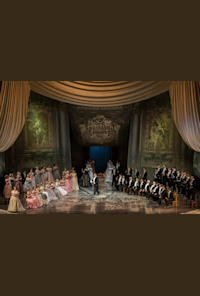

La Traviata (La traviata), Verdi
Deildu
Primorsky Stage of the Mariinsky Theatre (2022)Upplýsingar frá listasamtökum (staðfest af Operabase)
19 ágúst - 23 september 2022 (2 frammistöður)
VakningFarðu á vefsíðu|
ítalska
rússneska/enska
|
3h 15mins
La traviata by Verdi, Frá (2022/2022), Leikstýrt af Charles Roubaud, Anna Shishkina,, Hljómsveitarstjóri Waleriy Trubin-Leonoff, Pavel Smelkov, Primorsky Stage of the Mariinsky Theatre, Vladivostok, Russia
Framleiðandi
Conductor
WT(2022 ágú 19)
PS(2022 sep 23)
Stage director
AS(2022 ágú 19)
Leikarar
Violetta Valéry
(Violetta Valery)
AK(2022 ágú 19)
OZ(2022 sep 23)
Alfredo Germont
MS(2022 ágú 19)
AK(2022 sep 23)
Giorgio Germont
AB(2022 ágú 19)

(2022 sep 23)
Áhöfn
Lighting designer
Costume designer
Set designer
Choreographer
Chorus master
Musical director
Lærðu meira um tónskáld
Lærðu meira um tónlistarstarf
